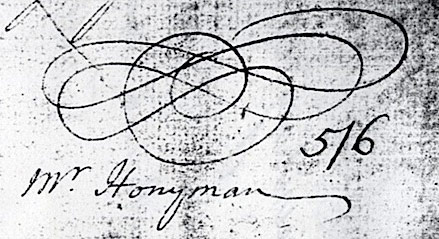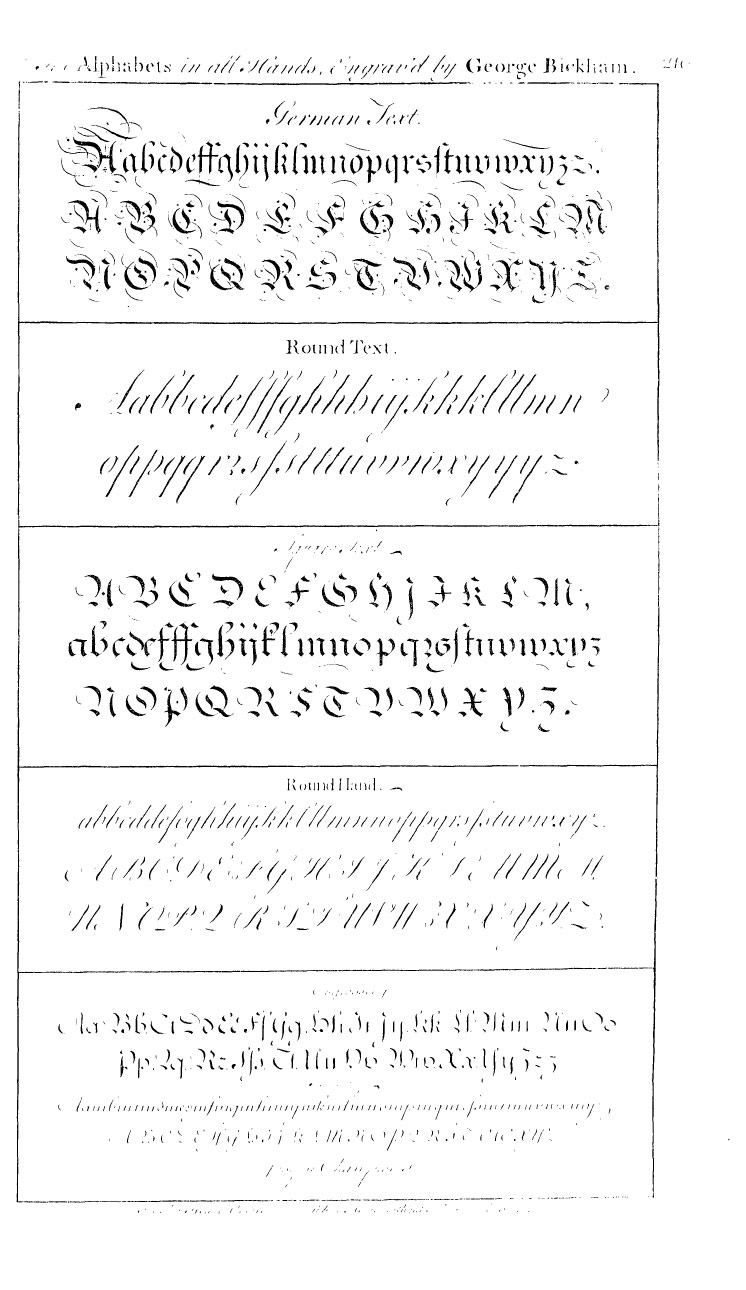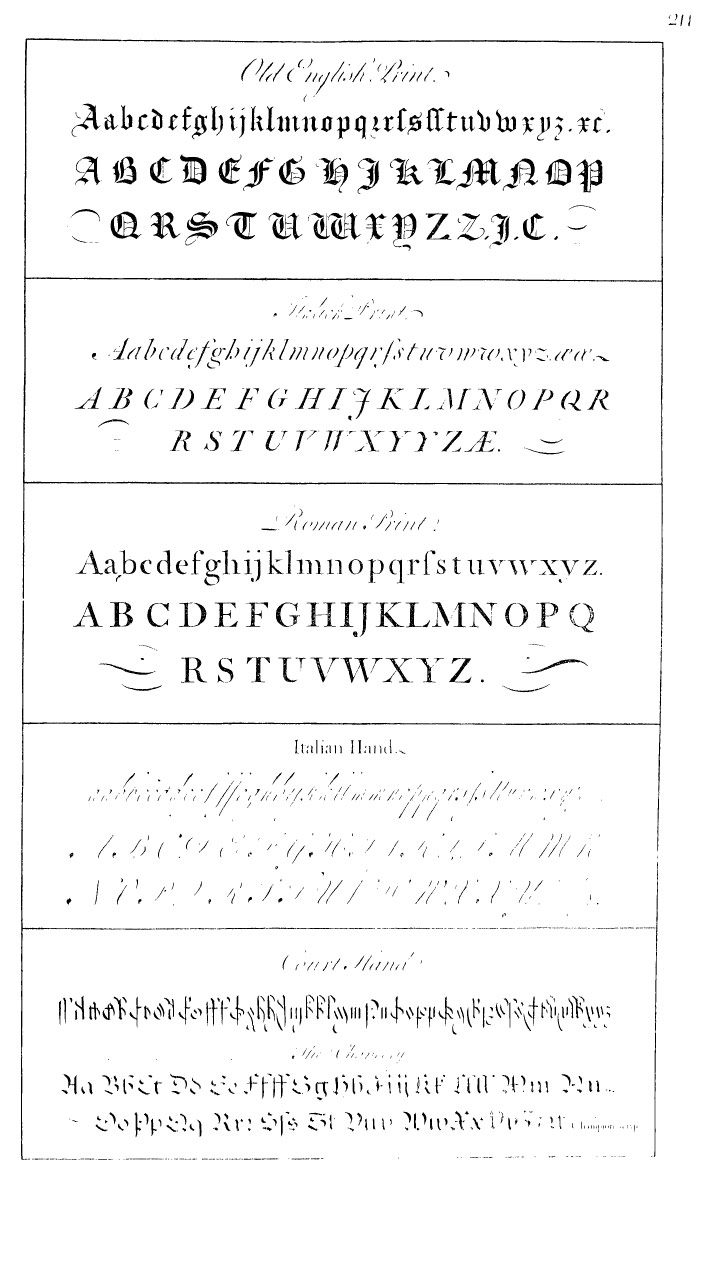Study Guide Colonial American Handwriting

Table of Contents
Overview: The Cultural Significance of Early American Handwriting
- What kind of Evidence does Handwriting Provide?
- A Brief Cultural History of Early American Handwriting
- Reading Colonial Handwriting
1. What kind of Evidence does Handwriting Provide?
Handwritten colonial documents provide a wealth of information: for colonists, the way a person conveyed almost as much information as what the person said directly. Penmanship not only conveyed social status, but also gender and specific occupations (Thornton 18). The goal of this study guide is to teach you to read both the explicit and implicit messages of colonial handwriting.
2. A Brief Cultural History of Early American Handwriting
Modern readers are often surprised how many colonists could read—including women and people of color. Not everyone who could read, however, could write. One test of whether people could write is through signature rates--that is, were people able to sign their names to documents or did they have to merely mark an "X"? In New England signature rates were quite high: In urban locales in 1670 in New England, 75% of men signed their names, and by 1790, 95% did. In rural areas it was slightly lower: 55% in 1670 and 90% in 1790. Rates for women were lower, but still impressive: in 1660 35% of women signed their names in urban areas of New England, and by 1790 55% did. Rural women signed 30% of the time in 1660, and 45% of the time in 1790 (Monaghan 384-85). Among the Wampanoag, 18% of the men signed in 1670 and 72% in 1810. For Wampanoag women, almost none signed their names in 1670, but by 1810 93% of the women signed their names. For both Wampanoag men and women, literacy rates did not decrease dramatically until after the Revolutionary War. Indeed, between 1740-1770, signature rates for Wampanoag men fell from 58% to 13% (Monaghan384-85)--probably a result of the larger amount of debt and indenturement of children during this era.
Alphabets
When people did learn to write, they had a range of alphabets to chose from. Each alphabet brought with it certain connotations. George Bickham's The Universal Penman (1743) provides a succinct list of the most popular alphabets used in the eighteenth century (Bickham 210-11). The pages below are from the Eighteenth Century Collections Online Edition (document #CW106425960). The most significant of these was the Italian and Gothic ("Secretary") hands.
 By the end of the 1600s, Gothic handwriting was considered “archaic” and the Italian-derived scripts dominated penmanship (Thornton 17). Italian scripts evolved into men’s and women’s versions. In addition to being the script favored by aristocratic men and women, the Italian script evolved into a third type favored by the rising class of merchants, bankers and tradesmen (Thornton 17). The Gothic form persisted, however, in legal documents (Thornton 22). While simple people might only learn one stilted type of alphabet, those who could pay for a writing instructor learned multiple scripts for multiple situations (Thornton 18). Flourishes, such as the one at right by Mr. Honeyman, were one way of showing that one had "mastered" the art of writing, as opposed to merely learning a trade (Thornton 15)
By the end of the 1600s, Gothic handwriting was considered “archaic” and the Italian-derived scripts dominated penmanship (Thornton 17). Italian scripts evolved into men’s and women’s versions. In addition to being the script favored by aristocratic men and women, the Italian script evolved into a third type favored by the rising class of merchants, bankers and tradesmen (Thornton 17). The Gothic form persisted, however, in legal documents (Thornton 22). While simple people might only learn one stilted type of alphabet, those who could pay for a writing instructor learned multiple scripts for multiple situations (Thornton 18). Flourishes, such as the one at right by Mr. Honeyman, were one way of showing that one had "mastered" the art of writing, as opposed to merely learning a trade (Thornton 15)
Here are a few "real life" examples of Gothic ("Secretary") handwriting and Italian handwriting. Click on the image to see a larger version of the sample, or use the link at the right to see the complete document
 |
Gothic ("Secretary"). Source of Example. |
 |
Italian with a few Gothic elements (notice the "d"s). |
This writing sample is in Wôpanâak. What handwriting style influenced it the most, though? (Answer)
3. Reading Colonial Handwriting
Recognizing Letters
Now that you are familiar with the social meaning of alphabets, it is time to practice recognizing individual letters. As much as colonists practiced their penmanship, they didn't always live up to the ideals found in handwriting manuals. Stress, time constraints, and illness also effected the quality of handwriting.
To practice identifying individual letters, play the handwriting game.
When you are able to play the game with few mistakes, try deciphering the following small excerpts. Click on each one to see a larger version of the image, or check your answer at right. Remember that spelling wasn't fixed until the middle of the nineteenth-century, so if a word doesn't look they way you expect try saying it aloud. For example, Wampanoag Alice Daggett often spelled her name “Elis”: on paper this name may look like a man’s name, but when said aloud can easily be recognized as a homonym for “Alice.”
 |
Answer |
 |
Answer |
 |
Answer |
Recognizing Names
Names are often hard to recognize in part because spelling conventions weren't fixed. Names may be spelled in ways that you don’t expect: fro example, Alice Daggett spells her name “Elis”; sometimes a person will even spell his name two different ways in the same document. People also often used abbreviations for their own names and those of other people. Play the name game until you feel comfortable recognizing these common colonial names.
Recognizing Abbreviations
Abbreviations were part of life in colonial America. Play the abbreviation game. You can also play the balderdash to make sure you know what the abbreviations mean.


